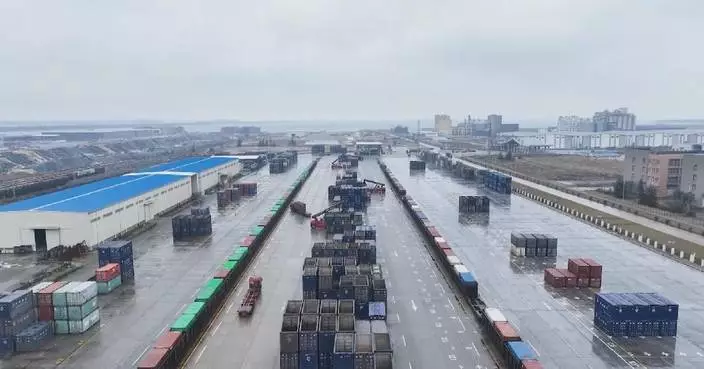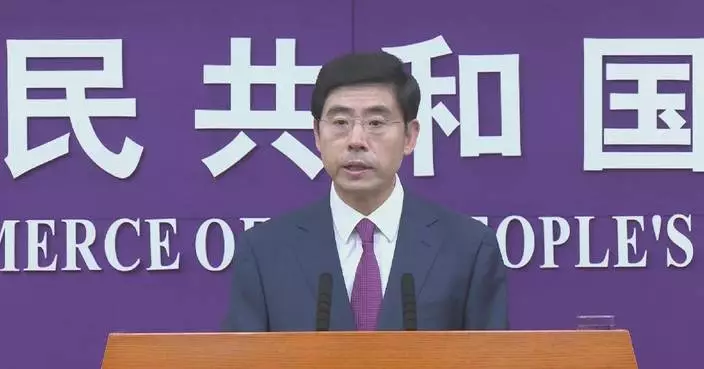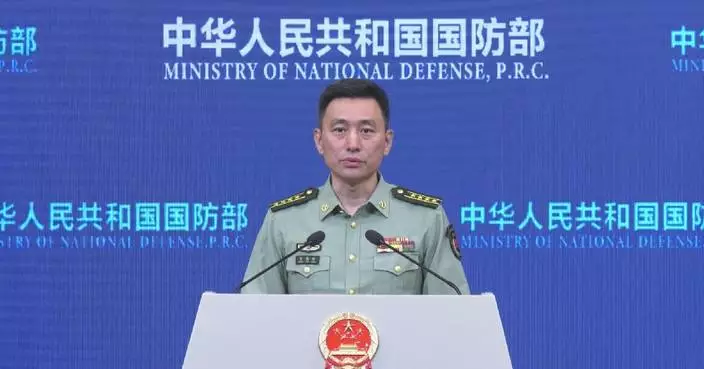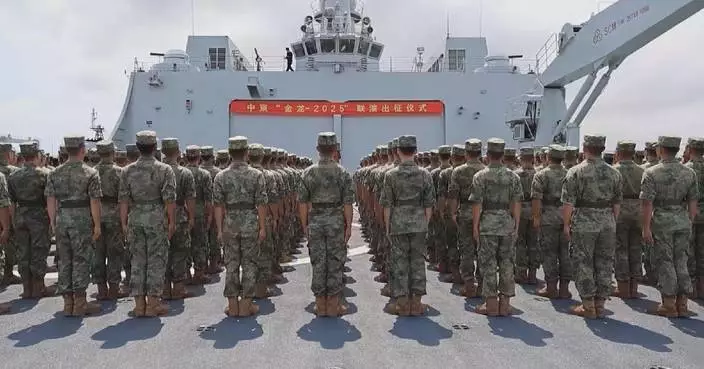China's e-commerce logistics index gained for the fourth straight month in June, indicating a steady domestic demand recovery, industry data showed on Wednesday.
Last month, the index tracking e-commerce logistics activities came in at 114.8 points, up 0.9 points from May, according to the China Federation of Logistics and Purchasing (CFLP).
Breaking down the data, the total business volume index stood at 132.9 points, a month-on-month increase of 3.1 points.
In terms of regions, the total business volume indexes of regions across China were all on the rise, with the western region reporting the largest growth and the eastern region's increase exceeding the national average. Notably, the rural e-commerce logistics business volume index reached 132.1 points, 2.4 points higher than May.
"E-commerce has played a significant role in promoting consumption. So the vitality of consumption is gradually increasing, and consumer expectations are also improving," said Liu Yuhang, director of China Logistics Information Center.
From the demand side, during the mid-year online shopping promotion in June, live streaming activities became more diverse and maintained a good growth momentum.
As for the supply side, e-commerce companies intensified efforts to meet the delivery needs of merchants and consumers, by means such as increasing the application of digital technology and providing customized services.
Experts predicted that the e-commerce logistics demand may slow down in July as the blowout mid-year e-commerce sales festival came to an end. However, driven by the rapid growth of consumer demand, the e-commerce logistics market is expected to remain very active.

China's e-commerce logistics index up for 4 consecutive months
A Russian State Duma deputy praised the robust ties between China and Russia, voicing firm confidence in the promising future of their bilateral cooperation.
Chinese President Xi Jinping arrived in Moscow on Wednesday for a state visit to Russia and to attend celebrations marking the 80th anniversary of the Victory in the Soviet Union's Great Patriotic War, at the invitation of Russian President Vladimir Putin. The visit underscores the deepening comprehensive strategic partnership of coordination for a new era between the two nations and their shared focus on historical remembrance and global cooperation.
Russian State Duma Deputy Yaroslav Yevgenyevich Nilov emphasized the strength and future potential of Russia-China relations, highlighting mutual respect, economic cooperation, and shared global responsibilities during an interview with China Global Television Network (CGTN).
Nilov praised the historical and modern-day foundation of Russia-China cooperation, attributing mutual respect and shared development goals as key pillars of the partnership.
"Russian-Chinese relations, in modern times and historically, have developed on the basis of mutual respect and recognition. Examining the history of Russia and China reveals many things in common. You only need to observe the significant growth and strengthening of both economies, particularly due to close cooperation and bilateral relations. Regular exchanges of delegations, international visits and events, the creation of favorable conditions, the opening of new markets for goods, and the expansion of joint production. All these factors contribute to the deepening of bilateral relations and cooperation. This has a positive impact on key areas such as the labor market, social development, and economic growth, benefiting both Russia and China," Nilov stated.
When asked about President Xi's call to leverage the resilience and certainty of the bilateral relationship, Nilov said that maintaining strong ties requires thoughtful diplomacy and a shared vision for global balance.
"It relates to the prudent stewardship of our bilateral partnership, our shared commitment to advancing progress, fostering development, and reinforcing cooperation with the aim of preserving global multipolarity. Fundamentally grounded in the mutual recognition and respect for each other's sovereign positions, even in instances where perspectives may diverge. We consistently endeavor to maintain a respectful dialog, reasoned discourse, and sustained engagement, both at the political and humanitarian levels. It is precisely through these channels that constructive collaboration between our nations continues to flourish: cultural exchanges are deepening, scientific advancement is being fostered, and resilient trade linkages are being created. Thus, it is evident that all necessary prerequisites exist for the further development and consolidation of relationships within the established paradigm, a framework wherein the previously mentioned objectives are not only achievable but actively pursued. Moreover, I am confident that the ongoing high-level engagements taking place in the Russian Federation, as well as those set to continue following the conclusion of the celebratory events, will serve to further solidify the reinforcement of our bilateral ties and, crucially, the enduring friendship between our nations," said Nilov.

Russian State Duma deputy hails strong Russia-China partnership





















































